Skunk Cabbage And A Wood Duck! The First Signs Of Spring At The Susquehanna Wetlands.
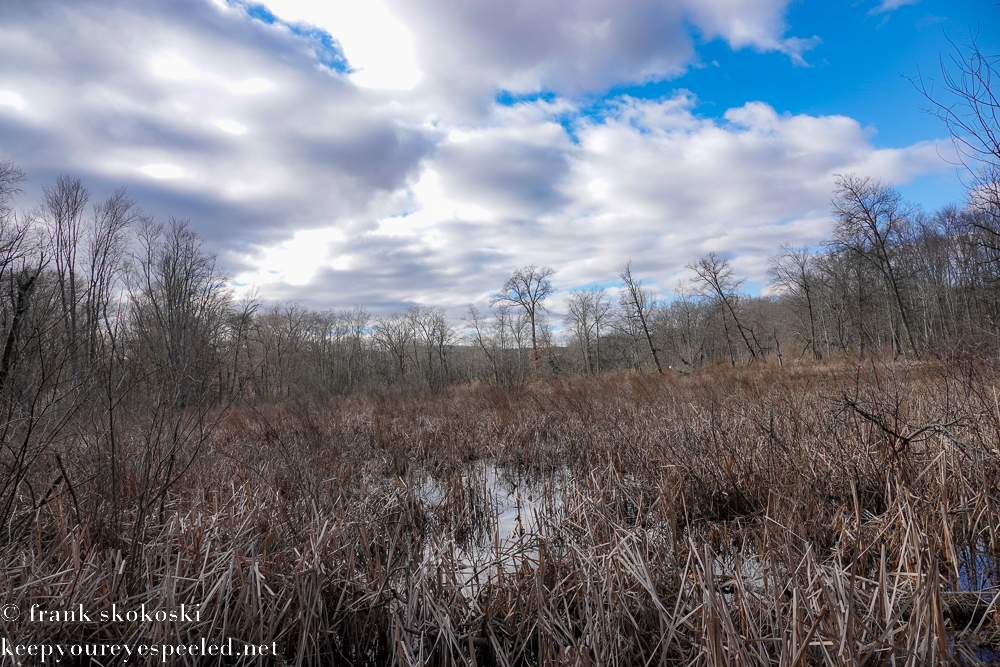
It’s not the robin, but the lowly skunk cabbage, that I consider the first sign of Spring here in Northeastern Pennsylvania. I know it it blooms early, usually popping up through the snows in late February or early March. However, I was surprised to find one on my hike in the Susquehanna Wetlands on Saturday. This is early even for the skunk cabbage. We have have had an very mild Winter and this was one of the results. Skunk cabbage is a member of the arum family and produces it’s own internal heat to produces blossoms in a spathe in even frigid Winter conditions. It still is a harbinger of Spring and that is a good thing. 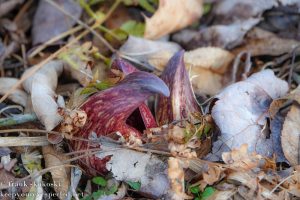
The early appearance of the skunk cabbage wasn’t the only indication of our mild Winter. Usually, in mid February there is a thick layer of ice on the ponds and lakes in Northeastern Pennsylvania. And many years even the Susquehanna River is filled with floating ice. Not this year, the ice that formed after a very sudden, and short, arctic freeze last week, was gone. 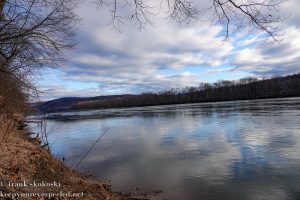
And most of the ice on the canals and ponds in the wetlands had melted too. 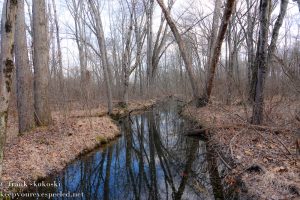
It was mild all week, however, the temperature dropped below freezing overnight so some new ice did form on some of the canals and ponds. 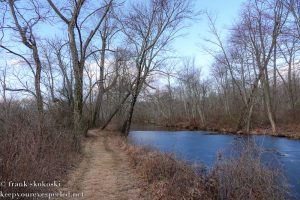
It was around 32 degrees and partly sunny when I began my walk. And this week, unlike like last week, there was a lot of bird activity in the wetlands. Shortly after beginning my hike I heard, then saw, a small flock of black-capped chickadees. These friendly birds were loudly chattering in the branches along the trail. 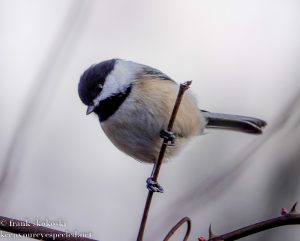
And when I see these birds I usually see a few more of our Winter resident birds , as I did on this hike. There were a few tufted titmice and 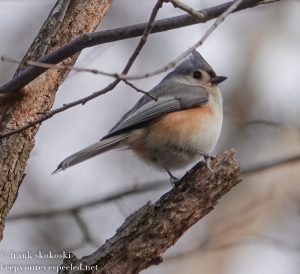
some eastern bluebirds in the tree tops. 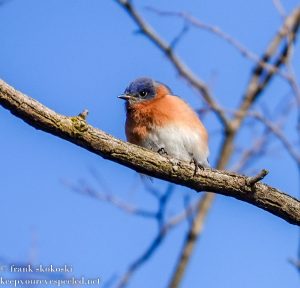
On the ground there were song sparrows, 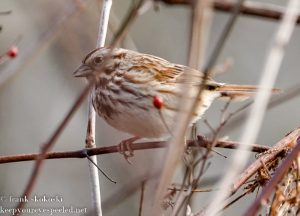
a red-bellied woodpecker were searching for insects on nearby tree trunks. 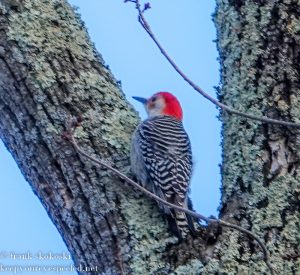
I also saw this black-capped chickadee eating some sort of insect it found on a tree trunk. This was the first time I saw a chickadee feeding on insects on a tree trunk. 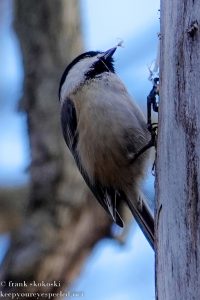
I walked to the Water Fowl pond and found it was still partially frozen, the areas that were not exposed to the sun. A great blue heron flew off the far end of the pond. I am sure it was the one that didn’t migrate south. I saw it huddled and freezing during the cold spells we had. 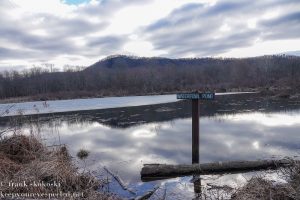
I walked towards the river lands and this is when I saw the skunk cabbage pushing up through the muddy ground. This is always a sure sign Spring is around the corner. 
I also saw a lot of reminders that it is still February and the middle of Winter. The brown decaying leaves from last years growth littered the trail. 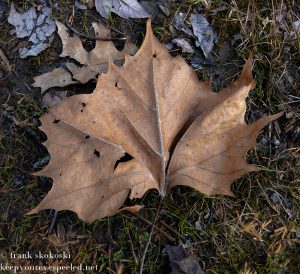
Brown fronds of last years ferns ,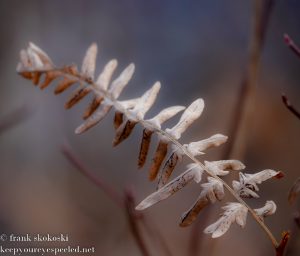
and last years grasses were also seen along the trail. 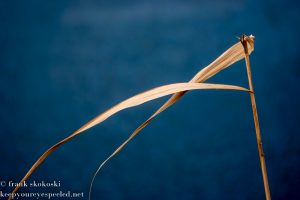
and the dried up red common winterberries were more signs, that, although it was mild, it was still Winter. 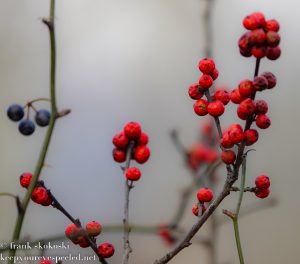
This his winter wren was hopping from branch to branch along the trail as I continued my walk .
.
I love the the ancient oak, maple and sycamore trees towering over the trails in the wetlands. While walking near this tall oak tree, I saw movement, and for a brief few seconds, I saw a duck on one of the ponds. At first I thought it was one of the mallard ducks that remained for the Winter. But, as it flew off I heard it’s high, unmistakable whistling call telling me it was a wood duck. It was to uick for mw and my camera. It was great to see these birds back in the wetlands. They are one of the first ducks to return in the Spring. Again this this very early to see them in February but it has been a very mild Winter. Our weather is changing. 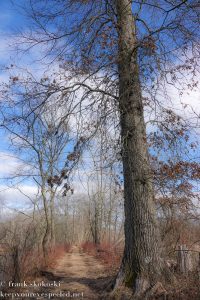
I walked to the river lands and found that the waters of Lake Took-A-While were not frozen, on the western side of the lake anyway. . I hoped to see some water fowl, and maybe even one of the bald eagles on the now unfrozen waters. There weren’t any, not even a Canada goose or the ruddy duck that was stranded here last week.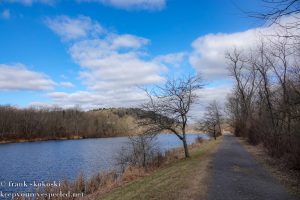
There was still some ice on the far end of the lake.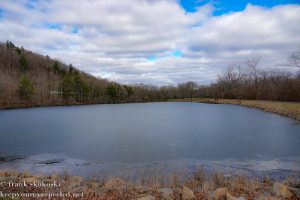
I walked along the lake. The only birds I saw in the river lands were some dark eyed juncos scurrying in the grass along the trail.
The clouds had increased on my walk back to the wetlands. 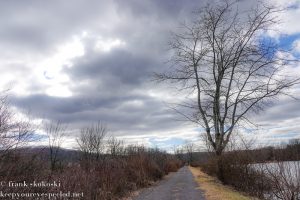
There wasn’t much bird activity, a few white throated and song sparrows on my walk, until I heard, and saw a small flock of eastern bluebird. 
I love seeing this bright blue birds on my hikes. 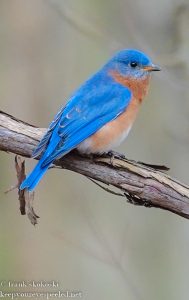
They usually nest in more open fields and I think they were in the wetlands foraging for food. This is a link to gallery with more photos of the birds I saw on my hike in the wetlands. Susquehanna Wetlands birds February 11 2023. 
The gate to the wetlands is closed for the Winter so I had to walk on the access road for about a 1/4 mile. I usually see some northern cardinals, woodpeckers ,and sparrows here but none on Saturday. But I was happy to find some garlic mustard, 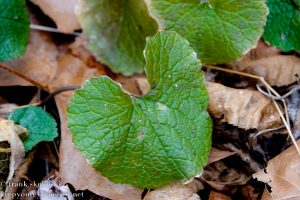
and Dame’s rocket greens still thriving in the mild Winter weather. I gathered some of these invasive, but edible plants, and enjoyed them for dinner. 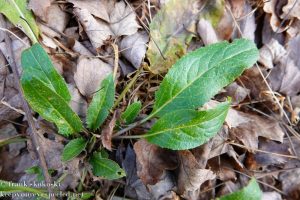
I finished my five mile hike without seeing any exciting critters It has been months since I saw a bald eagle here, I wasn’t too disappointed, as always I enjoy the peace and quiet of the wetlands. And I did see a few of our feathered friends who stay with us for the Winter. Soon, they will be joined by their smarter cousins who migrated south for the Winter. I can’t wait to welcome, and photograph them. This is a link to a gallery with more photos from my hike in the wetlands. Susquehanna Wetlands February 11 2023. 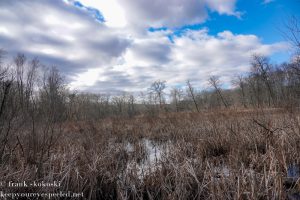
“While it is February one can taste the full joys of anticipation. Spring stands at the gate with her finger on the latch.” ― Patience Strong
Categories
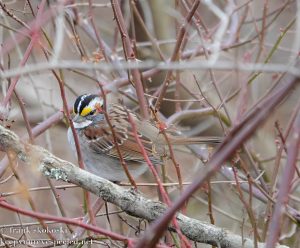
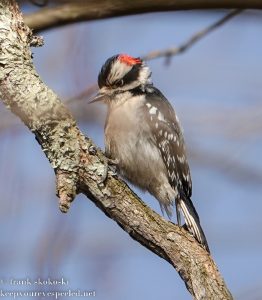
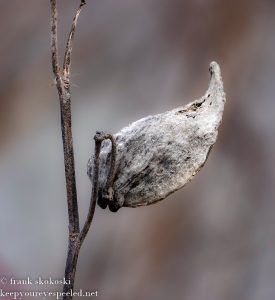

Recent Comments